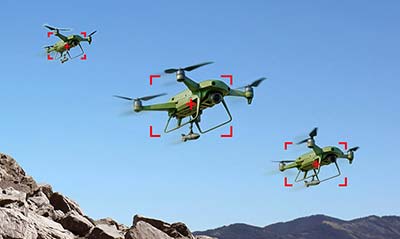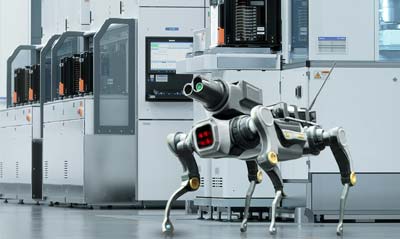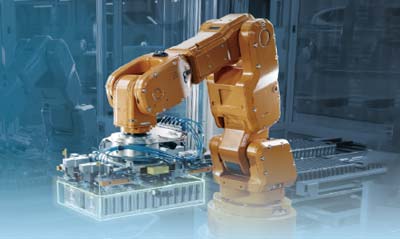When it comes to small computers, one might assume that size is the only factor to consider. However, for industrial applications or semi-outdoor environments, there are crucial features that determine whether a small computer can withstand the demanding conditions it will be subjected to. So, the question arises: How do you choose a small computer that truly meets the requirements of industrial tasks or semi-outdoor use?
In this article, we will guide you through the process of selecting a small computer that is tailored to thrive in these challenging environments. From ruggedness and performance to temperature tolerance and waterproof capabilities, we will explore the key criteria to keep in mind. So, if you want to know how to make the right choice, read on.
Key Takeaways:
- Choosing a small computer for industrial applications or semi-outdoor environments requires careful consideration of specific features.
- Compactness, robust performance, wide operating temperature range, stability, and waterproof capabilities are essential factors to look for.
- A small industrial computer offers benefits like space efficiency, industrial-grade performance, and durability.
- The ability to withstand wide temperature fluctuations and be resistant to water is crucial for a small computer used in semi-outdoor environments.
- A rugged and fanless embedded computer provides enhanced durability, reliability, and reduced maintenance requirements.
Why a Small Industrial Computer
In today's industrial landscape, the demand for compact and durable computing solutions has grown exponentially. The need for a small industrial computer arises from the space-constrained nature of industrial settings and the specific requirements to meet the challenges of harsh environments.
Industrial environments often have limited space, making it impractical to use traditional desktop computers. A small industrial computer, also known as a compact computer, overcomes this challenge by offering a space-saving design without compromising on performance and functionality.
These small computers are specifically engineered to withstand the demanding conditions of industrial applications. Industrial-grade components and rugged construction ensure that they can handle extreme temperatures, vibrations, dust, and other harsh elements commonly found in industrial environments.
"Small industrial computers are designed to provide powerful performance and long-term reliability in challenging industrial environments."
In addition to their compact size and robust build, small industrial computers also offer a range of features tailored for industrial applications. They often include multiple connectivity options such as Ethernet, USB, and serial ports, allowing seamless integration with industrial equipment and systems.
Furthermore, industrial computers are engineered to operate reliably in extended temperature ranges, making them suitable for both hot and cold environments. This wide temperature tolerance ensures uninterrupted performance, eliminating the risk of system failure due to temperature fluctuations.
When it comes to operating in semi-outdoor environments, small industrial computers offer distinct advantages. Their compact and fanless design allows them to operate silently and without the need for additional ventilation, protecting against dust, moisture, and other impurities that can compromise system performance.
In summary, small industrial computers play a crucial role in meeting the unique demands of industrial settings. Their compact size, rugged build, and specialized features make them an ideal choice for applications where space is limited, durability is essential, and performance cannot be compromised.
Features to Consider When Choosing a Small Computer for Semi-Outdoor Use
When choosing a small computer for semi-outdoor environments, certain features are crucial to ensure optimal performance and reliability. These features include wide temperature tolerance, waterproof capabilities, and a fanless design. Let's explore why these attributes are essential for a small computer to withstand varying weather conditions and operate reliably in semi-outdoor settings.
Wide Temperature Tolerance
A small computer designed for semi-outdoor use should be able to withstand extreme temperature fluctuations. Wide temperature tolerance ensures reliable operation even in harsh environments where temperatures can reach extreme highs up to 50°C during midday, or lows down to -5°C in the evening. Whether it's scorching heat or freezing cold, a small computer with wide temperature tolerance can handle it all, making it ideal for outdoor applications.
Waterproof Capabilities
Semi-outdoor environments are often exposed to moisture, rain, and other external elements. Therefore, it is crucial for a small computer to have waterproof capabilities. A waterproof small computer can withstand splashes, spills, and even temporary submersion, ensuring uninterrupted operation and protecting sensitive internal components from water damage.
Fanless Design
A fanless design is another vital feature to consider for a small computer used in semi-outdoor settings. Fanless computers are designed to dissipate heat passively, eliminating the need for traditional cooling fans. This not only ensures silent operation but also prevents the entry of dust, dirt, or other particles that could potentially damage internal components. Additionally, a fanless design helps reduce maintenance requirements and enhances the overall durability.
By considering these features in a small computer, users can ensure that their device can withstand the challenges of semi-outdoor environments and deliver optimal performance and reliability. Whether it's for outdoor kiosks, digital signage, or industrial automation, a small computer with wide temperature tolerance, waterproof capabilities, and a fanless design is the ideal choice, regardless of the weather conditions.
Choosing the Right Small Computer for Your Specific Needs
When it comes to selecting a small computer for your industrial applications or semi-outdoor environments, there are several factors to consider. By understanding these considerations, you can ensure that you choose a small computer that meets your specific needs and delivers optimal performance.
- Processing Power: Evaluate the processing power required for your tasks. Consider the complexity of your applications and the level of performance needed to handle them efficiently. Look for small computers with high-performance processors that can handle your workload effectively.
- Connectivity Options: Assess the connectivity options available on the small computer. Consider the types of devices or equipment you need to connect to and ensure compatibility. Look for small computers with a variety of ports and interfaces to support seamless connectivity.
- Overall Size: Take into account the physical dimensions of the small computer. Determine the available space in your industrial setting or semi-outdoor environment and choose a small computer that fits perfectly without causing any obstruction.
Additionally, it is recommended to consider the durability and ruggedness of the small computer. Look for a mini computer that can withstand harsh conditions, vibrations, and temperature extremes often encountered in industrial environments or semi-outdoor areas. Furthermore, opt for a fanless design to eliminate the risk of dust or debris entering the system.
Remember, selecting the right small computer is crucial for ensuring efficient operations and maximizing productivity in your specific applications. Take the time to carefully evaluate your requirements and choose a mini or compact computer that meets the demands of your industrial tasks or semi-outdoor environments.
| Factors to Consider | Small Computer Requirements |
| Processing Power | High-performance processors capable of handling complex applications |
| Connectivity Options | Various ports and interfaces to support seamless connectivity |
| Overall Size | Compact dimensions suitable for space-constrained environments |
| Durability | Rugged construction and resistance to harsh conditions |
| Fanless Design | Elimination of dust and debris risks |
| Exposure to high humidity or concentration environments | IP rating capabilities providing waterproof, dustproof, submersion capabilities, etc. |
Conclusion
In conclusion, selecting a small computer that is suitable for industrial or semi-outdoor settings requires careful consideration of specific features and requirements. The compactness of the computer is crucial for space-constrained environments, allowing for easy installation and integration. Additionally, robustness and durability are essential, ensuring that the computer can withstand the harsh conditions often encountered in industrial or semi-outdoor settings.
Wide temperature tolerance is another critical feature to look for, as it enables the computer to function reliably in extreme temperature variations. This is particularly important in outdoor applications where temperature fluctuations can be significant. Furthermore, opting for a fanless design can prevent issues caused by dust, dirt, or debris accumulation, improving the overall reliability and reducing maintenance requirements.
By following the guidelines outlined in this article, readers can make informed decisions when selecting a small computer. Consider factors such as processing power, connectivity options, and overall size to ensure the computer meets the specific needs of the intended application. Prioritizing compactness, robustness, wide temperature tolerance, and a fanless design will contribute to the optimal performance and longevity of the small computer in demanding industrial or semi-outdoor environments.
FAQ
What are the important factors to consider when choosing a small computer for industrial applications or semi-outdoor environments?
When selecting a small computer suitable for industrial tasks or semi-outdoor use, it is crucial to consider factors such as compactness, robust performance, wide temperature range, stability, and waterproof features. These attributes ensure the computer can withstand the demanding conditions often found in industrial settings or outdoor environments, while still delivering reliable performance.
Why is a small industrial computer necessary for certain applications?
Small industrial computers are essential for applications with limited space. These computers are designed with a compact form factor, allowing them to fit into constrained environments without compromising on performance. They are also built to withstand the harsh conditions commonly found in industrial settings, making them ideal for rugged environments.
What features should I consider in a small computer for semi-outdoor use?
When choosing a small computer for semi-outdoor use, it is important to prioritize features such as wide temperature tolerance, waterproof capabilities, and a fanless design. Wide temperature tolerance ensures the computer can operate reliably in varying weather conditions. Waterproof capabilities protect the computer from moisture and other environmental factors. A fanless design eliminates the need for cooling fans, reducing the risk of dust and debris damaging internal components and eliminating possible point of failure.
What are the advantages of a rugged and fanless embedded computer?
Rugged and fanless embedded computers offer several benefits for industrial or semi-outdoor use. Their rugged construction makes them withstand harsh conditions, including extreme temperatures, vibrations, and shocks. The fanless design eliminates the risk of fan failure and reduces maintenance requirements, as there are no moving parts to replace or clean. These computers are highly reliable and deliver consistent performance in challenging environments.
How do I choose the right small computer for my specific needs?
When selecting a small computer for your specific requirements, consider factors such as processing power, connectivity options, and overall size. Assess the computational demands of your intended applications and choose a computer with sufficient processing power to handle them. Ensure the computer has the necessary connectivity options to interface with your existing equipment. Additionally, consider the size and form factor that best fits your workspace or installation location.






































